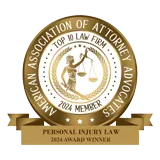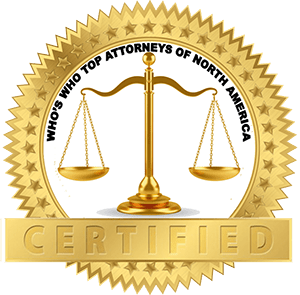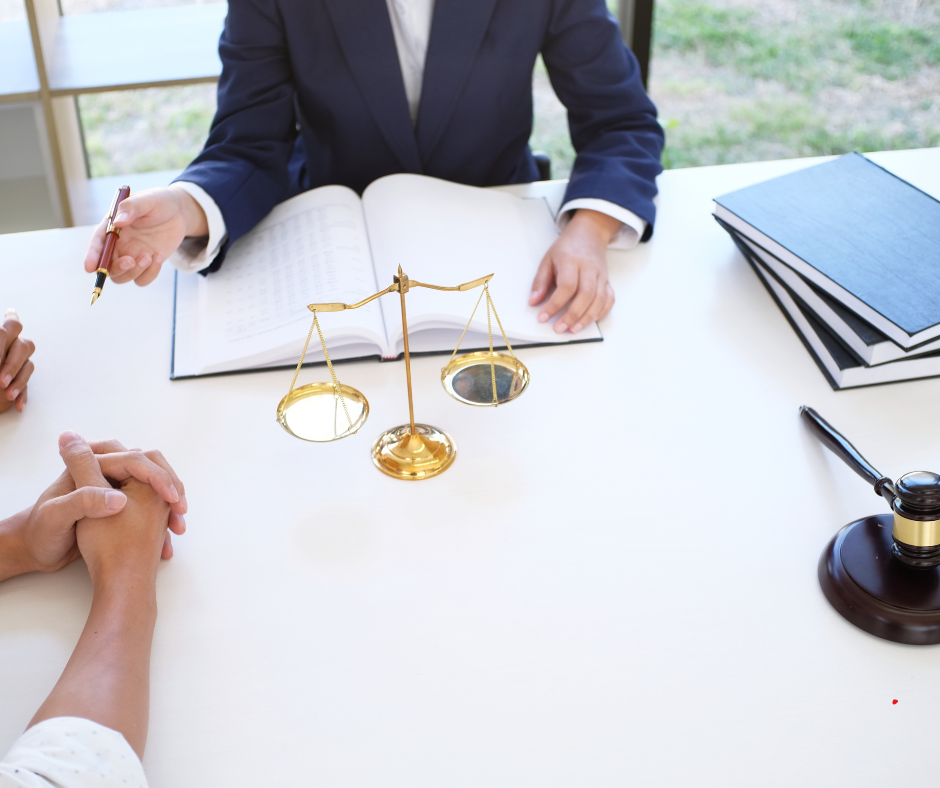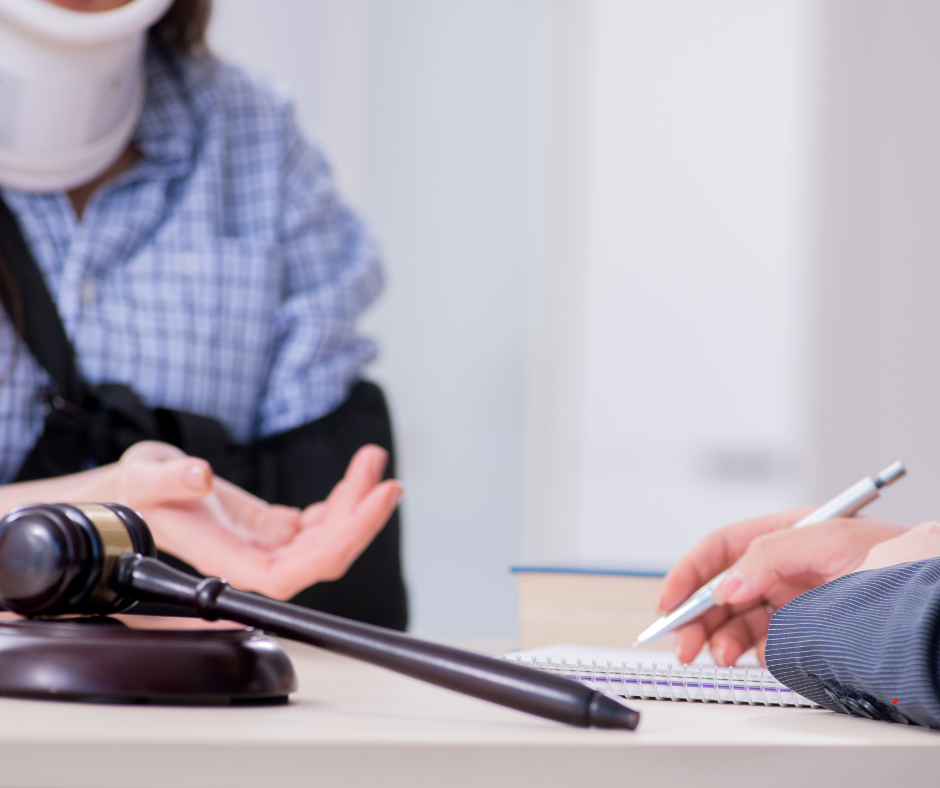How Long Does a Personal Injury Lawsuit Take in Wisconsin
If you were injured in a car accident, slip and fall, or another personal injury incident, you are likely anxious to resolve your personal injury case so you can obtain the compensation you need to cover your medical bills, lost income, and other damages. How long a personal injury lawsuit takes in Wisconsin can vary from one case to the next.
An experienced personal injury attorney from Nowlan Personal Injury Law can assist you with every step of the personal injury claims process. They can evaluate your situation and provide you with a better understanding of the expected timeline for your case. Contact us today to get started with a free case evaluation.
Steps Involved in the Personal Injury Process
To understand the timeline of your case, it’s crucial that you know the various steps involved in the process, which include:
Reporting the Accident
Whether you’re involved in a car accident or a premises liability incident, you should immediately report your accident to authorities or the business responsible for your injuries. The accident report can be a valuable piece of your personal injury claim, and the insurance company will want it to process your legal claim.
Seeking Medical Attention
You should seek medical attention immediately after an accident so that your injuries can be properly diagnosed, documented, and treated. You may need ongoing medical care. Your personal injury lawyer may recommend that you reach maximum medical improvement (MMI) before trying to settle your claim, which is the point in your recovery where you have recovered as much as can be expected and your medical condition has stabilized.
Filing an Insurance Claim
Your personal injury attorney can file an insurance claim on your behalf, notifying the insurance company of the accident and your request for compensation under a relevant insurance policy.
If you were injured in a car accident, your claim would likely be with the at-fault driver’s liability insurance provider. If you were injured on someone else’s property, you would file a claim with their homeowner’s insurance or commercial liability insurance. Defendants may have other insurance policies that apply in different cases.
Investigating the Accident
After you report the accident to the insurance company, it will appoint an insurance adjuster to investigate your claim. Your lawyer also conducts an investigation.
These investigations may involve:
- Reviewing accident reports
- Gathering evidence regarding fault
- Interviewing witnesses
- Evaluating photos and videos of the accident
- Reviewing medical records
- Reading statements from the parties involved in the accident
- Working with accident reconstruction experts who can use scientific data to explain how the accident happened
Sending a Demand Letter
Your lawyer sends a demand letter to the insurance company, which provides the following information:
- Details about the accident, including the date, time, and location of the accident
- A statement regarding why the insured is responsible for the accident
- The damages you sustained
- The amount of compensation you expect to receive in exchange for not suing the defendant
- A statement that if the insurance company does not provide fair compensation, you plan to take further legal action
Negotiating for Fair Compensation
The insurance company may respond to your demand for compensation by offering a lower amount of compensation. Your personal injury lawyer responds in kind by requesting more compensation. If your lawyer and insurance company can agree on a settlement value, a confidential settlement agreement is prepared, and you sign it, stating that you will not pursue further legal action in the matter in exchange for the specified amount of compensation.
Filing a Personal Injury Lawsuit
Most personal injury cases wind up resolving at the settlement stage. However, if your case did not settle, your lawyer can file a personal injury lawsuit. The lawsuit starts with a formal complaint that states:
- That the court has proper jurisdiction of the case
- The basic facts surrounding the accident
- Why the defendant is responsible for the accident
- The amount of damages you want to be awarded
The defendant must be served with the complaint and a summons that explains a lawsuit has been filed against them. They have an opportunity to respond to the lawsuit and contest your claims to avoid a default judgment.
Preparing Pre-Trial Motions
Lawyers may prepare various legal motions. For example, the defense may file a motion to dismiss, claiming that you don’t have legal grounds to file the case. Or, your lawyer may file a motion for summary judgment, stating that there are no material issues in dispute and asking the court to award you the damages you requested.
The court may rule on written motions, or it may have a hearing where attorneys can present their legal arguments. If these motions are denied, the case continues toward trial.
Conducting Discovery
Lawyers conduct discovery to obtain information to prepare for trial. This can consist of various requests, including for:
- Production of documents: Attorneys can ask the other side for documents, videos, images, medical records, and other evidence.
- Interrogatories: Interrogatories are written questions that a lawyer may pose to the opposing party to obtain additional information about the case, including the legal arguments they plan to assert, the evidence they plan to present, and the witnesses they plan to have testify at trial.
- Admissions: Admissions ask a party to clearly admit or deny certain allegations under oath.
- Depositions: A deposition is a recorded interview with a party or witness that provides a preview of the testimony they would offer at trial.
- Subpoenas: A subpoena requests that a non-party provide testimony at trial or produce evidence in a pending case.
Participating in Settlement Conferences
It is common for parties to try to settle the case after discovery since both sides will have a better idea about the strengths and weaknesses of their case after this point. The judge may schedule a settlement conference to encourage the parties to attempt to reach a settlement or ask them to participate in mediation, with the goal of resolving the case.
Having a Trial
If the case has not been settled up to this point, it proceeds to trial. A trial consists of the following steps:
- Voir dire: This is the jury selection process. Attorneys can ask for potential jurors to be dismissed if they are biased or for other reasons.
- Opening statements: Your attorney provides a statement discussing the accident, why the defendant is responsible, and how the accident has affected your life. The defense attorney then presents their opening statement to refute what your attorney said.
- Presentation of your case: Your lawyer presents your case by calling witnesses and presenting evidence to support your claim. As the plaintiff, you have the burden of proof of proving your case by the preponderance of the evidence, meaning that the facts are more likely than not as you allege.
- Presentation of the defense: The defense can put on its own case or argue that you failed to meet your burden of proof. If they present witnesses, your lawyer can cross-examine them.
- Closing argument: Your lawyer provides a closing argument, summarizing the case. The defense attorney does the same.
At the conclusion of the case, the judge or jury decides the case and reads the verdict.
Why It’s Crucial to Work with an Experienced Personal Injury Attorney
A personal injury lawyer understands the legal claim process. They can handle your case and make sure that it moves along. Without legal representation, the insurance company can try to push you around or unnecessarily delay your claim, hoping that you’ll drop your case or settle it for less than you deserve.
Personal injury attorneys protect their clients from insurance companies. They handle communications and can ask for updates about the matter so that you don’t have to have direct conversations with them and potentially say something that could jeopardize your claim.
Personal injury lawyers can ensure that your case is moving along at a reasonable rate – or take legal action if it’s not. They can also ensure that your personal injury lawsuit is filed within the applicable statute of limitations.
Key Factors That Affect How Long a Personal Injury Case Takes
So, how long does a personal injury lawsuit take in WI? It depends.
Every personal injury case is different. Therefore, there is not really an “average settlement timeline.” Factors that can affect the length of a particular personal injury case include:
- The severity of injuries, as you may need to reach MMI before settling your case
- The insurance company’s and the defendant’s willingness to settle the case
- Whether liability is in dispute
- Whether your case is settled or goes to trial
- The number of responsible parties involved in the case
- The damages involved in the case
- How lengthy settlement negotiations take
- The length of the discovery process
Factors That Can Make a Case Take Longer
Personal injury cases can be resolved in as little as a few months or take more than a year. Factors that can make your case take longer include:
- You suffered a serious injury or permanent disability.
- The defendant denies responsibility for the accident.
- The insurance company denies your claim.
- You contributed to the accident.
- You have a lengthy recovery period.
- The insurance company uses delay tactics.
- The insurance company refuses to make a fair settlement offer.
- Your case goes to trial.
- Your case involves extensive discovery.
- Expert witnesses must be involved to explain complex aspects of your case.
- The court has a heavy docket of other cases.
How You Can Expedite the Personal Injury Process
You can be a pivotal part of speeding up the injury settlement timeline in Wisconsin by taking these steps:
- Reporting the accident immediately to the authorities.
- Seeking immediate medical treatment for your personal injuries
- Keeping all of your doctors’ appointments and following instructions from your medical professionals
- Following up quickly regarding any requests from your personal injury lawyer
- Keeping track of all your accident-related documentation, including medical records, communications to the insurance carrier,
- Providing evidence of your damages, including the cost of your medical expenses, lost income, and property damage
Your personal injury lawyer can guide you through the settlement process, focusing on securing the maximum compensation available for your claim.
Statute of Limitations in Wisconsin Personal Injury Lawsuits
It’s crucial that you recognize the deadline that applies to your personal injury case. This is known as the statute of limitations. Generally, the statute of limitations in Wisconsin is three years from the date of the accident.
However, there are times when you may have more or less time to file your personal injury case. If you don’t file your lawsuit within the applicable statute of limitations, you can lose your right to recover compensation through the court system. By working with an experienced personal injury lawyer, you can ensure that your case is filed in a timely manner.
Contact Nowlan Personal Injury Law for a Free Case Review
If you were injured in an accident caused by someone else’s negligence, you should not have to pay the consequences for their negligence. The legal team at Nowlan Personal Injury Law is here to guide you through the personal injury claim process. We can explain how long a personal injury case in WI takes, based on your specific situation.
We don’t settle cases for less than our clients deserve. We work hard to resolve your case as quickly as possible without sacrificing the money you will need to rebuild your life. We have secured millions of dollars in jury awards and settlements for our clients.
We are prepared to take your case from start to finish. We demand maximum compensation for our clients. Contact us today for a free, no-obligation consultation to get started on your path to recovery.
Contact me today for a free consultation.


















